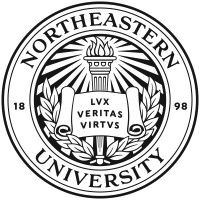预约演示
更新于:2025-05-07
BamA
更新于:2025-05-07
基本信息
别名- |
简介- |
关联
5
项与 BamA 相关的药物靶点 |
作用机制 BamA inhibitors |
在研适应症 |
非在研适应症- |
最高研发阶段临床前 |
首次获批国家/地区- |
首次获批日期1800-01-20 |
JP2023062550
专利挖掘靶点 |
作用机制- |
在研适应症 |
非在研适应症- |
最高研发阶段药物发现 |
首次获批国家/地区- |
首次获批日期1800-01-20 |
靶点 |
作用机制 BamA调节剂 |
在研机构- |
在研适应症- |
非在研适应症 |
最高研发阶段无进展 |
首次获批国家/地区- |
首次获批日期1800-01-20 |
100 项与 BamA 相关的临床结果
登录后查看更多信息
100 项与 BamA 相关的转化医学
登录后查看更多信息
0 项与 BamA 相关的专利(医药)
登录后查看更多信息
330
项与 BamA 相关的文献(医药)2025-06-01·Poultry Science
Butyric acid from ligilactobacillus animalis 2020MB acts on membrane BamA to control avian pathogenic escherichia coli
Article
作者: Jiang, Xinjie ; Cong, Feng ; Du, Zunhe ; Yin, Haichang ; Jin, Zhenhua ; Zhou, Yao
2025-04-04·Science Advances
Architecture and conformational dynamics of the BAM-SurA holo insertase complex
Article
作者: Degen, Morris ; Maier, Timm ; Burmann, Björn M. ; Hiller, Sebastian ; Callon, Morgane ; Modaresi, Seyed Majed ; Jakob, Roman P. ; Lehner, Philippe A.
2025-04-01·Vaccine
Identification of immunogenic outer membrane vesicle vaccine antigen components using a meningococcal protein microarray
Article
作者: Derrick, J P ; Muzzi, A ; Chang, C M ; Borrow, R ; Viviani, V ; Pizza, M ; Bartolini, E ; Biolchi, A ; Awanye, A M ; Ramirez-Bencomo, F ; Delany, I ; Thistlethwaite, A
3
项与 BamA 相关的新闻(医药)2023-01-06
·药智网
一年一度“医保目录”大考隆重拉开帷幕。2022年,国谈490个申报药品中,344个通过初步审查,与2021年271个相比,申报和通过初步形式审查的药品数量都有一定增加,而且本次调整明显向罕见病、儿童等特殊人群适当倾斜。其中就包括“天价抗癌药”,药明巨诺的CAR-T瑞基奥仑赛注射液。2021年我国首款“天价抗癌药”CAR-T产品阿基伦赛注射液通过了初步形式审查,但最终没能坐上谈判桌,折戟于医保谈判。大家期望的“天价谈判”大戏并没有如期上演。留下的悬念,今年更贵的CAR-T产品将上演“二战医保”的好戏!全球CAR-T进展CAR-T治疗,又称嵌合抗原受体T细胞治疗,通过基因工程技术将T细胞激活,并装上定位导航装置CAR(肿瘤嵌合抗原受体),将T细胞这个普通“战士”改造成“超级战士”,回输患者体内,用于治疗疾病。作为一种“活的”药物,它是一种治疗肿瘤的新型精准靶向疗法。CAR-T疗法与传统药物有着很大的区别,它对肿瘤细胞的杀伤更为精准,在提高疗效的同时大幅减轻了毒副作用。目前,全球已有8款CAR-T疗法获批上市,分别是首次在中国上市的瑞基仑赛注射液、阿基仑赛注射液和首次在美国上市的Kymriah、Yescarta、Tecartus、Breyanzi、abecma、西达基奥仑赛。除了百时美/蓝鸟的Abecma、南京传奇的西达基奥仑赛为BAMA靶点,其余皆为CD19靶点。2021年,阿基仑赛注射液、瑞基奥仑赛注射液先后在中国获批上市,2022年西达基奥仑赛获美国FDA批准上市,国产的CAR-T疗法已然进入井喷收获期。可以说,CAR-T的问世,颠覆了迄今为止存在的所有形式的癌症治疗(手术,放疗,化疗,靶向,免疫治疗)。表1 全球已上市CAR-T细胞疗法盘点本次,承担测试医保谈判“天花板”和支付方式创新的任务的瑞基奥仑赛注射液,在2022年上半年业绩为:共开具77张处方,完成64位患者的回输,实现销售额6600万元。从药明巨诺主动申报医保谈判的举动来看,是希望通过“以价换量”,快速打开中国市场。毕竟在患者自付和商业保险支付能力不足的中国市场,昂贵的销售价格极大地影响了瑞基奥仑赛中国市场的开拓。通过国家医保谈判取得医保报销资格,较大幅度地降低患者的自付比例,并与商业保险形成支付组合拳,有可能成为瑞基奥仑赛在国内市场打开局面的关键。天价CAR-T,多少钱有望进入医保?医保支付的年治疗费用为30万元,按目前三甲医院肿瘤药物的报销比例约为70-85%来计算,药物的年治疗总费用天花板在35-43万元之间。如果按过往天花板经验来考虑,则预计瑞基奥仑赛的降价幅度在63%-67%。比往几年的平均降幅稍微高一点,貌似是有望实现目标。如果“特事特办”,瑞基奥仑赛能够抬高天花板,例如医保年治疗支付费用拓宽到50万元,那么瑞基奥仑赛的年治疗费可以在58-71万元之间,降价幅度在45%-55%之间。这方面最大的担忧是CAR-T并非对应适应症的唯一治疗方式,只不过CAR-T的临床疗效更佳。以目前淋巴瘤的治疗费用对比,淋巴瘤首次平均治疗费用约为20.5万元,首次复发44.0万元,复发两次及以上62.5万元,而骨髓移植的价格大概为50万人民币,单抗治疗费用约40万/年。如果以符合中国国情的考虑,CAR-T定价在50万元上下,可能会比较符合预期。更进一步,如果探索出医保报销与商业保险的组合支付方式,对国产创新药支付环境属于重大边际改善。若降价后的CAR-T,市场规模如何?根据目前CAR-T疗法主要获批的适应症是急性淋巴细胞白血病(ALL)、非霍奇金淋巴瘤(NHL)和多发性骨髓瘤(MM),大概测算一下CAR-T在中国的市场空间。根据国家统计局第七次全国人口普查数据,中国人口数量约为14.14亿元,ALL、NHL、MM的发病率大概为0.00074%、0.005702%和0.00121%,可以测算出大致的患病人群。考虑复发难治(含晚期)患者才使用CAR-T,而这三者复发难治(含晚期)患者的比例分别是50-60%、20%-50%和80-90%。再结合CAR-T的渗透率在30-50%,若CAR-T单价为50万元/年计算,中国市场空间大概是90-169亿元。目前中国已上市的两款CAR-T,大概实现销售规模在1亿元上下,畅想一下,降价进入医保后,有望可以换100倍以上的市场用量。降60%的价,换100倍规模的前景,似乎是一笔划算的市场买卖。小结面对疾病,患者最怕两件事,一是没药,二是没钱!如果可以让普通家庭用上“一针治愈”癌症的新兴疗法,那将会是广大肿瘤患者的福音。我们衷心希望CAR-T疗法能顺利纳入医保,让更多患者实现“临床治愈”。声明:本内容为作者独立观点,不代表药智网立场。如需转载,请务必注明文章作者和来源。对本文有异议或投诉,请联系maxuelian@yaozh.com。责任编辑 | 八角转载开白 | 马老师 18323856316(同微信)— Tips —长按/扫码入读者群交流投稿请联系:马老师 电话 18996384680微信 18323856316邮箱maxuelian@yaozh.com 阅读原文,是昨天最受欢迎的文章哦
细胞疗法免疫疗法上市批准财报基因疗法
2022-06-20
·生物谷
这项新的研究显示网状肽聚糖---由氨基酸和糖组成---的年龄是关键因素。
在一项新的研究中,来自纽卡斯尔大学和牛津大学的研究人员发现革兰氏阴性菌依赖细胞壁来同步构建包围着细菌的保护层---外膜(outer membrane),并在这种保护层中发现了一个潜在的致命弱点,这可能有助于开发下一代抗生素。他们发现革兰氏阴性菌依赖细胞壁来同步构建外膜。相关研究结果于2022年6月15日在线发表在Nature期刊上,论文标题为“Peptidoglycan maturation controls outer membrane protein assembly”。论文通讯作者为波士顿儿童医院干细胞项目的Fernando Camargo博士。论文通讯作者为纽卡斯尔大学的Waldemar Vollmer教授和牛津大学生物化学系的Colin Kleanthous教授。论文第一作者为纽卡斯尔大学的Federico Corona博士和牛津大学生物化学系的Gideon Mamou博士。
世界卫生组织(WHO)已经宣布抗菌素耐药性(Antimicrobial Resistance, AMR)是全球十大公共卫生威胁之一。一些细菌已经对所有已知的抗生素产生了耐药性。特别有问题的是耐多药的革兰氏阴性菌,如大肠杆菌、铜绿假单胞菌以及可引起肺炎和败血症的肺炎克雷伯菌。它们的外膜位于细胞壁之外,并排除了许多类型的靶向细菌细胞壁的抗生素。
这项新的研究显示,由一种称为肽聚糖(peptidoglycan)的坚韧材料组成的细菌细胞壁,通过一种称为BamA的基本生物生成蛋白,对将新蛋白引入外膜的位置施加了惊人的控制。这有助于细菌协调细胞壁和外膜,这对它们的生长方式至关重要。
Vollmer教授解释说,“细菌很小,却有很高的内部压力,就像汽车轮胎一样。它们有一个强大的细胞壁来承受这种压力,防止它们爆裂,同时仍然允许它们生长和分裂。我们首次揭示的是随着它们的生长,细胞壁的扩张过程如何与它之外的外膜的扩张过程联系起来。”
细胞壁在外膜蛋白(OMP)生物发生中起着关键作用。图片来自Nature, 2022, doi:10.1038/s41586-022-04834-7。
这项新的研究显示网状肽聚糖---由氨基酸和糖组成---的年龄是关键因素。主要发生在细菌细胞两极(末端)的“旧”肽聚糖完全关闭了新的外膜蛋白生物生成。相比之下,主要出现在细菌细胞即将分裂的地方的“新”肽聚糖,允许最大数量的外膜生长。这种简单而优雅的机制确保了细菌对细胞壁和外膜保持严格的控制。
Kleanthous教授补充说,他们“从未怀疑革兰氏阴性菌如此依赖细胞壁来协调外膜的生长。破坏这种交谈将真正‘打开’革兰氏阴性菌,使它们容易受到外膜会排斥的抗生素的伤害”。(生物谷 Bioon.com)
参考资料:
1. Gideon Mamou et al. Peptidoglycan maturation controls outer membrane protein assembly. Nature, 2022, doi:10.1038/s41586-022-04834-7.
2. Mechanism of expanding bacteria revealedhttps://www.ncl.ac.uk/press/articles/latest/2022/06/mechanismofexpandingbacteriarevealed/
2022-06-15
The process that allows bacteria to expand and grow while maintaining the strength of the cell walls has been identified as offering a potential new target for antibiotics.
A new study published in Nature today has identified a potential Achilles heel in the protective layers surrounding Gram-negative bacteria that could aid in the development of next-generation antibiotics. The study, carried out jointly by Professor Waldemar Vollmer and Dr Federico Coronaat Newcastle University, alongside Professor Colin Kleanthous and Dr Gideon Mamouin the Department of Biochemistry at the University of Oxford, shows that Gram-negative bacteria depend on the cell wall to synchronise building of the outer membrane.
The World Health Organization (WHO) has declared Antimicrobial Resistance (AMR) one of the top 10 global public health threats. Some bacteria have already become resistant to all known antibiotics. Particularly problematic are multidrug resistant Gram-negative bacteria such as Escherichia coli, Pseudomonas aeruginosa and Klebsiella pneumoniae that cause pneumonias and sepsis. Their outer membrane resides beyond the cell wall and excludes many classes of antibiotics that would otherwise target it.
The research reveals that the cell wall, which is composed of a tough material known as peptidoglycan, exerts surprising control over where new proteins are introduced into the outer membrane by an essential biogenesis protein known as BamA. This helps bacteria coordinate these layers, which is crucial for the way they grow.
Professor Vollmer from the Centre for Bacterial Cell Biology at Newcastle University Biosciences Institute explains: "Bacteria are tiny yet have a very high internal pressure, like a car tyre. They have a strong cell wall to withstand this pressure and prevent them bursting while still allowing them to grow and divide. What we have revealed for the first time is as they grow, how the process of wall expansion is linked to that of the outer membrane beyond it."
The research revealed that the age of the mesh-like peptidoglycan -- composed of amino acids and sugars -- is the key factor. 'Old' peptidoglycan that occurs primarily at the poles (ends) of cells completely shuts down new outer membrane protein biogenesis. By contrast, 'new' peptidoglycan that occurs primarily at sites where cells are about to divide, allows the greatest amount of outer membrane growth. This simple yet elegant mechanism ensures bacteria maintain a tight control over both cell envelope layers.
Professor Kleanthous from Oxford added: "We never suspected that Gram-negative bacteria were so reliant on the cell wall to coordinate growth of the outer membrane. Disrupting this cross-talk would literally 'open up' Gram-negative bacteria, making them vulnerable to antibiotics that the outer membrane otherwise excludes."
The work was supported by the European Union's Horizon 2020 programme, the European Research Council, the Wellcome Trust, the Biotechnology and Biological Sciences Research Council and the Medical Research Council.
分析
对领域进行一次全面的分析。
登录
或

Eureka LS:
全新生物医药AI Agent 覆盖科研全链路,让突破性发现快人一步
立即开始免费试用!
智慧芽新药情报库是智慧芽专为生命科学人士构建的基于AI的创新药情报平台,助您全方位提升您的研发与决策效率。
立即开始数据试用!
智慧芽新药库数据也通过智慧芽数据服务平台,以API或者数据包形式对外开放,助您更加充分利用智慧芽新药情报信息。
生物序列数据库
生物药研发创新
免费使用
化学结构数据库
小分子化药研发创新
免费使用

